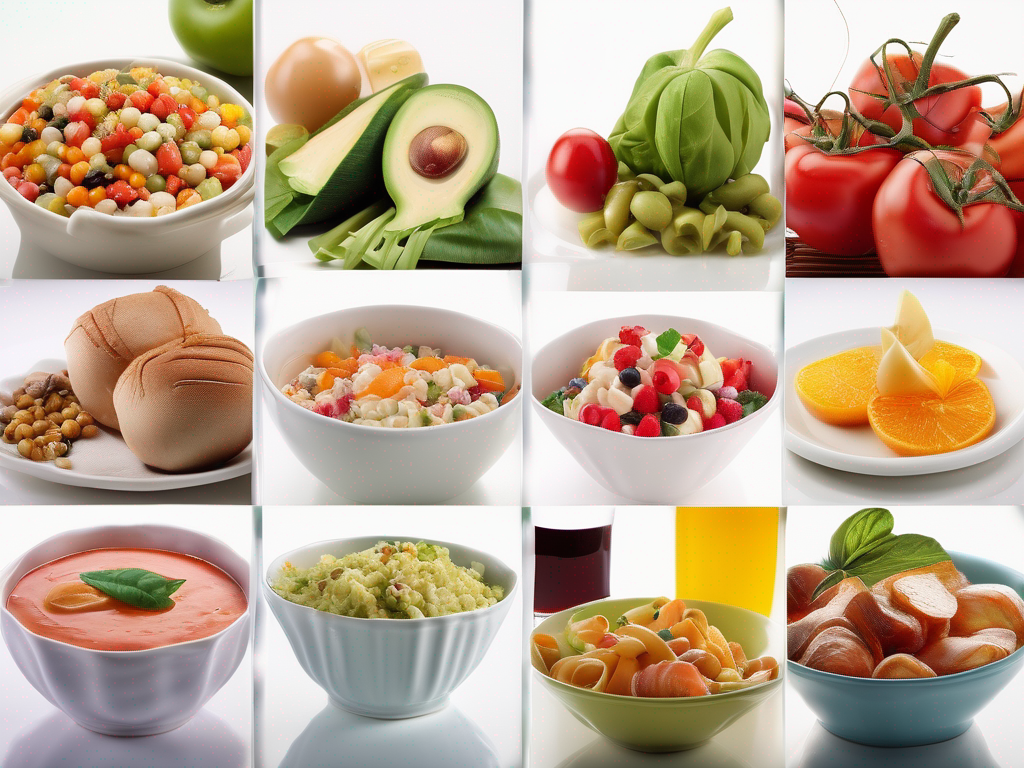
Understanding Shelf Life: A Guide to Food Safety and Storage
Get Your Free Food Safety Cheat Sheet
30 most common foods with instant answers. Print it and stick it on your fridge—completely free!
Understanding Shelf Life: A Guide to Food Safety and Storage
In today's fast-paced world, understanding the concept of shelf life is essential for maintaining food safety and quality. Whether you are a home cook, a restaurant owner, or a food enthusiast, knowing how long your food products can be stored before they spoil is crucial. In this comprehensive guide, we will delve into what shelf life means, factors that influence it, and practical tips for extending the shelf life of your food items.
What is Shelf Life?
Shelf life refers to the period during which a food product can be stored under specified conditions while maintaining its safety and quality. It is important to note that the shelf life of a product is different from its expiration date. While the expiration date indicates the last day a product is guaranteed to be at its best quality, the shelf life provides a broader timeframe for safe consumption.
Factors Influencing Shelf Life
Several factors can influence the shelf life of a food product. Understanding these factors can help you make informed decisions when purchasing, storing, and consuming food items. Some common factors include:
- Type of Food: Different types of foods have varying shelf lives. For instance, fresh produce typically has a shorter shelf life compared to canned goods.
- Storage Conditions: Proper storage conditions, such as temperature, humidity, and light exposure, play a significant role in determining shelf life.
- Packaging: The type of packaging used can impact the shelf life of a product. Vacuum-sealed packaging, for example, can help extend the shelf life of certain items.
- Processing Methods: The way a food product is processed and preserved can affect its shelf life. Canned foods, for instance, have a longer shelf life due to the sterilization process.
Tips for Extending Shelf Life
To maximize the shelf life of your food items and reduce food waste, consider the following tips:
- Proper Storage: Store perishable items in the refrigerator or freezer to slow down spoilage. Keep pantry staples in a cool, dry place away from direct sunlight.
- Check Expiration Dates: Regularly check the expiration dates of products in your pantry and fridge. Use older items before newer ones to prevent wastage.
- Use Airtight Containers: Transfer leftovers to airtight containers to maintain freshness and prevent exposure to contaminants.
- Rotate Stock: Practice the "first in, first out" method when stocking your pantry to ensure that older items are used before newer ones.
Food Safety Considerations
Ensuring food safety is paramount when it comes to shelf life and storage practices. Consuming expired or spoiled food can lead to foodborne illnesses and other health risks. Here are some food safety considerations to keep in mind:
- Temperature Control: Proper temperature control is essential for preventing bacterial growth. Refrigerate perishable items promptly and avoid leaving them at room temperature for extended periods.
- Cross-Contamination: Prevent cross-contamination by storing raw meats separately from ready-to-eat foods and using separate cutting boards for different food items.
- Thawing Practices: Thaw frozen foods safely in the refrigerator or under cold running water to prevent the growth of harmful bacteria.
Conclusion
In conclusion, understanding the shelf life of food products is crucial for maintaining food safety and quality. By considering factors that influence shelf life, following practical tips for extending shelf life, and prioritizing food safety, you can make informed decisions when it comes to storing and consuming food items. Remember to always check expiration dates, practice proper storage techniques, and prioritize food safety in your daily food handling practices. By doing so, you can enjoy fresh, safe, and delicious meals while minimizing food waste.
Authoritative Food Safety References
These agencies and university labs inform every tip and health precaution we publish.
USDA FoodKeeper – Cold Storage Guidelines
Official refrigerator, freezer, and pantry timelines maintained by the U.S. Department of Agriculture.
Visit USDA FoodKeeperFDA Produce Safety Rule & Grower Guidance
Field-to-fridge handling practices that prevent contamination of fruits, vegetables, and leafy greens.
Visit FDA Produce SafetyCDC Foodborne Illness Prevention Hub
Surveillance-backed guidance on pathogens, symptoms, and steps to reduce foodborne illness risk.
Visit CDC Food SafetyUC Davis Postharvest Technology Center
University research detailing optimal storage atmospheres for produce after harvest.
Visit UC Davis PostharvestPenn State Extension – Home Food Preservation & Safety
Peer-reviewed extension bulletins on safe canning, chilling, and reheating practices.
Visit Penn State ExtensionGet Your Free Food Safety Cheat Sheet
30 most common foods with instant answers. Print it and stick it on your fridge—completely free! Want more? Upgrade to the complete guide with 70+ foods.
Scan your food directly and get instant safety info using our AI-powered camera feature.